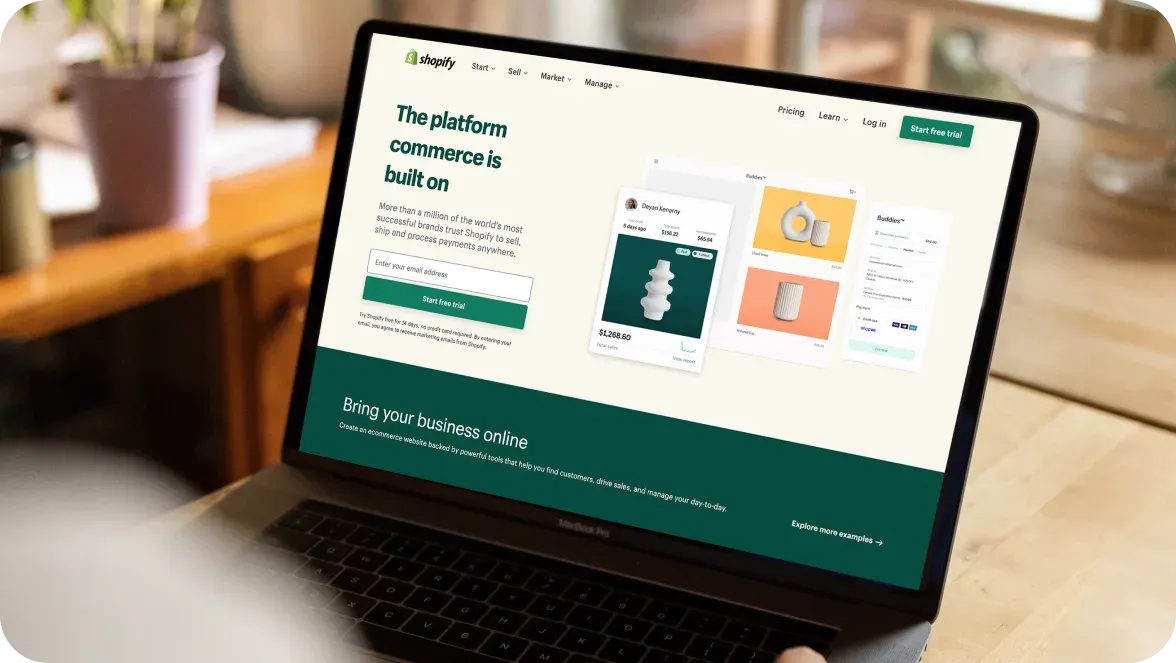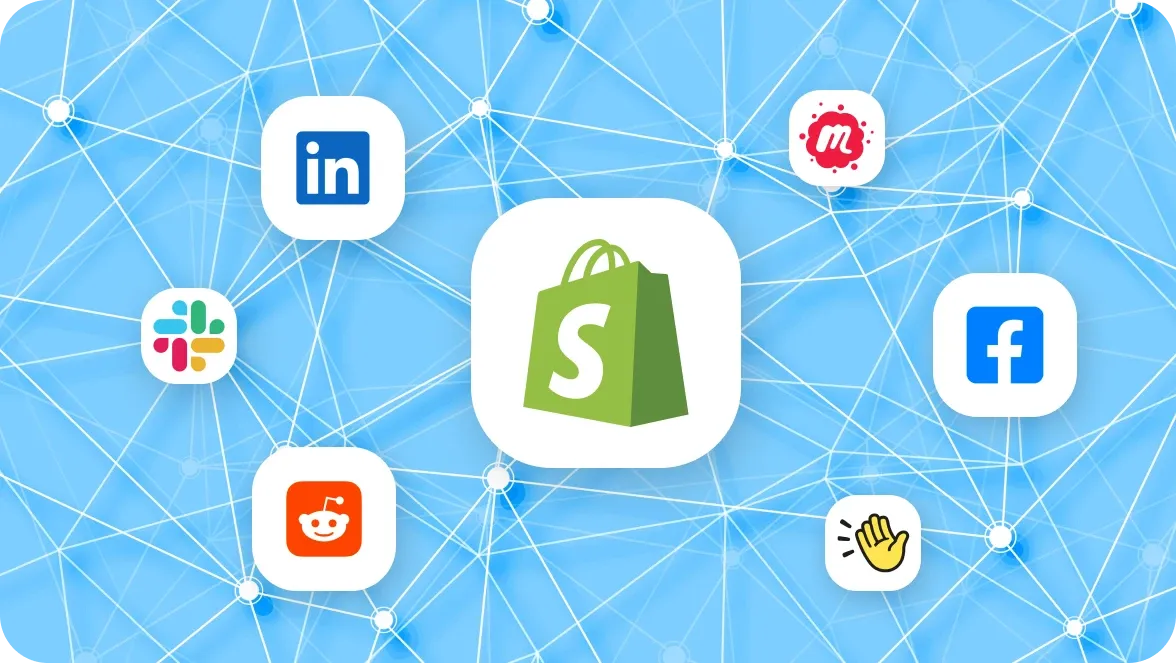
If you want to rival the likes of Amazon in the marketplace domain, your product should be on par with it from a technological standpoint. After all, ease of use is the second most popular reason why shoppers choose Amazon.
To achieve that, you can choose a marketplace development platform to launch it on or build your marketplace from scratch.
But which approach is better? And if you opt for an e-commerce platform, how do you choose the right one among dozens of options?
We at DigitalSuits have done our fair share of e-commerce development. So we’d like to share with you what we’ve learned about marketplace development in this guide. Here’s what we’ll cover:
What custom and platform development approaches are
Their respective pros and cons
The top three platforms, their pros, and cons
How to choose the right platform
What Is Custom Marketplace Development?
Custom marketplace development means you develop your product from scratch without relying on platforms like Shopify or Sharetribe. You’ll need a team of developers, UI/UX designers, QA engineers and testers, and a project manager.
When it comes to custom development, you have two options on how to make it possible:
- Hire an in-house team. It gives you total control over the development process. However, it also comes with additional hiring and employee benefit costs. The outcome will depend heavily on your team's expertise – and your company’s ability to manage it.
- Outsource the project. Hiring an e-commerce development company to develop your marketplace saves you the trouble of recruiting and managing a team. Plus, if you choose the right partner, you can tap into its team’s expertise in e-commerce.
Pros and cons of custom marketplace development
How do you know if custom development is the right choice for your marketplace project? Consider these five pros and cons to zero in on the answer.
3 Pros of custom development
Custom development is the most advanced and, therefore, challenging approach to creating a marketplace. However, when done right, you can reap the following three benefits.
You’re not limited in functionality
Whatever features or business logic you want to include in your marketplace, you’re limited by technological progress and budget. Want to add AR or geolocation support? No problem. Think microservices software architecture will be the best option? Consider it done.
Building a marketplace from scratch also allows you to get the marketplace that matches your vision to a T. And if you have an idea that requires sophisticated functionality, custom development can make it a reality.
You can scale and change your marketplace easily
Custom development allows you to start with a limited solution (an MVP) and easily build on it in iterations. Since you own the codebase, you can implement new features without the limitations of a marketplace platform.
Scaling it to match the increasing user base is also no problem. Since you don’t depend on third-party platforms, you can scale it as you see fit.
You’re 100% in charge of your final product
Whether you hire an in-house team or outsource the development, you remain the product owner. So, you’re entirely in charge of how the process goes, what features get implemented first, and how the final product will look.
2 Cons of custom development
Only some startups can afford to build a marketplace from scratch. These two challenges are the reasons why.
It can get pricey
Custom development is a labor-intensive process, and it requires substantial upfront costs. You need to pay the developers, UI/UX designers, and the rest of the team for hundreds of hours of work. That’s usually a barrier to entry for small and medium-sized businesses than can’t afford those costs.
How pricey it can get depends on the complexity of your project. If you want to build a marketplace like Amazon from scratch, for example, its basic version will cost you up to $50,000. However, a more sophisticated version of it can require a budget measured in hundreds of thousands of dollars.
It’s a time-consuming process
Building a marketplace from scratch will take longer than launching one using a ready-made template on Shopify. It requires months to get from the discovery and planning to QA testing and rollout. So, you’ll have to plan the time-to-market accordingly.
Plus, while the developers do their magic, you, as the product owner, must be quite hands-on to ensure the outcome matches your vision. So, prepare to spend hours on communication!
What is a development platform in e-commerce?
A marketplace development platform is an out-of-the-box solution that offers hundreds or thousands of templates and components for building your marketplace.
Shopify is the biggest name among out-of-the-box marketplace platforms in the U.S., with a market share of 29% (as of September 2021, per Statista). Other popular platforms include WooCommerce, BigCommerce, Sharetribe, and Near Me.
Some platforms advertise themselves as no-code solutions allowing you to create and launch your e-commerce website in one day. However, when it comes to complex projects (marketplaces are among them), you’ll probably need expert marketplace platform development services.
Pros and cons of marketplace platform development
On the one hand, marketplace platforms allow you to launch your e-commerce website in a faster, simpler, and more affordable way. But they may also limit you in functionality and scalability.
To see if you’re ready for this tradeoff, compare these pros and cons with your project outlook.
3 Pros of platform development
Here are three reasons why marketplace platform development can be a good choice for some projects.
Development facilitation
Think of a marketplace platform as a LEGO construction set. It offers plenty of bricks (themes, website elements, plugins, features) that you can use to create your marketplace.
While the marketplace design part often requires an expert hand, implementing the necessary functionality is magnitudes easier than building it from scratch. That’s why launching a marketplace using an off-the-shelf solution accelerates the time-to-market and cuts upfront development costs.
Accelerate time-to-market
In the case of off-the-shelf platforms, you can go one of two ways:
Rely on their templates in every step – but risk your website design and features not standing out among competitors.
Involve a marketplace platform development company to create a custom frontend and integrate the platform’s backend components with it.
Whichever option you choose, you’ll get a ready-to-be-launched marketplace faster than if you had it developed from scratch.
Affordability
If you build a small-scale project and don’t involve developers, using a marketplace platform will cost you only the subscription fee and transaction fees of around 2-3%. You probably won’t even have to pay for web hosting – platforms like Shopify include it in all their plans.
But even if you involve developers, the development costs will be lower since you won’t have to pay for hundreds of working hours to build the back end from scratch. Combine that with the subscription and transaction fees – and you’ll still get an affordable option to launch a marketplace.
3 Cons of platform development
Of course, marketplace platform development isn’t without its cons. Here are three of them that may steer you toward custom solutions.
Fees can pile up quickly
If you plan to have a small-scale online store for your DIY accessories, an out-of-the-box marketplace development platform is an inexpensive way to launch it.
But if you envision running a high-volume marketplace, prepare to pay hundreds or thousands of dollars in subscription fees, along with a cut from every transaction. For example, ShopifyPlus, Shopify’s enterprise plan, starts at $2,000 per month.
So, conduct a cost-benefit analysis to see which type of development will be more cost-efficient in your case.
You’re limited in your choice of features
Some platforms keep up to date with the latest e-commerce trends and support features like AR and 3D media. Despite that, you may be limited in implementing your marketplace vision. You may need the option to add AR the way you want it to function, for example.
On top of that, if you want to start with the low-tier platform subscription, you’ll find yourself constrained by it. Lower tiers offer fewer features since they’re less expensive.
Scaling your marketplace can be tough
The platform’s stability, performance, security practices, and resources will determine how well your marketplace will function. How the platform implements certain features can also impact the performance of your product.
The same goes for how easily you can scale your marketplace. If the platform struggles with handling high loads or multiple advanced features, you may spend a substantial amount of money migrating to a different one.
3 Marketplace development platforms worth your attention
What are the biggest players in the market? Here are three of them, along with their pros, cons, and pricing.
Shopify
Shopify is the leading e-commerce platform in the U.S. and one of the leading platforms in the world. Over six million websites worldwide are built using Shopify.
Shopify offers a wide range of online store and point-of-sale solutions for SMEs and large enterprises. It can power various e-commerce products, from online stores and membership websites to full-fledged marketplaces.
Read our blog post on building a marketplace with Shopify to learn more about using Shopify in marketplace platform development. Or, check out one of our case studies. Our Scentbird New York, Sanctuary, and Kitchen Knife Manufacturer Artisan Revere success stories are a good place to start.
Pros and cons
Shopify is praised for a variety of supported goods – bundled, digital, physical products, subscriptions, memberships, and more. Also, the platform offers solid security practices. For example, Shopify web hosting comes with Level 1 PCI Compliance. Shopify users appreciate a wide range of payment gateways supported, from Amazon Pay and 2Checkout to Skrill and Paypal.
However, this marketplace development platform does have some downsides. For example, Shopify charges transaction fees for non-Shopify payment gateways while third-party apps that add extra features often come at a steep subscription fee. Moreover, migrating from Shopify to another platform is unnecessarily challenging.
Pricing
Shopify subscription plans come in three flavors, with varying ranges of features and support:
Basic ($29/mo)
Standard ($79/mo)
Advanced ($299/mo)
There’s also an enterprise version of Shopify, ShopifyPlus, that starts at $2,000/mo.
Sharetribe
Unlike Shopify, Sharetribe is a platform designed specifically for creating online marketplaces. It has two main products for marketplace businesses:
- Sharetribe Go is Shopify for marketplaces, if you will. Thanks to an intuitive website builder, entrepreneurs can create their marketplace without writing a single line of code.
- Sharetribe Flex is a development tool for building custom marketplaces. Intended for developers, it allows creating unique frontends easily thanks to pre-built components.
Pros and cons
Using Sharetribe comes with certain benefits, such as:
No additional transaction fees imposed by Sharetribe itself under Sharetribe Go
A wide range of supported marketplace types, from property renting or booking to selling physical goods and services
A variety of monetization methods supported
Easy migration from Sharetribe to another provider
However, using this marketplace development platform, prepare for hosting your frontend separately under Sharetribe Flex. You may lack certain features, like distributing discount codes to vendors and customers.
Pricing
Sharetribe Go has four tiers you can choose from depending on the number of user accounts:
Hobby ($99/mo) – up to 100 users
Pro ($149/mo) – 100-1,000 users
Growth ($199/mo) – 1,000-10,000 users
Scale ($299/mo) – 10,000-100,000 users (extra $299/mo per every additional 100,000 users)
Sharetribe Flex, in its turn, has a flat subscription fee of $369/mo plus a progressive transaction fee that depends on your monthly transaction volume. It’s 0% for up to $28,000 and varies from 1% to 0.3% for higher transaction volumes.
Marketplacer
Marketplacer is a marketplace development platform that offers more than just software. Marketplacer conducts interviews, sessions, and workshops with every business before deploying the platform. It powers over 16,000 businesses in 10 countries.
Here’s what Marketplace has to offer in terms of features:
Two implementation options: headless and connected
Pre-built Salesforce and Adobe Commerce connectors
Third-party app and payment gateway integrations (Afterpay, Facebook, Xero, Twilio, PayPal)
Pros and cons
Marketplacer offers several powerful pros:
Robust analytics and reporting features
A variety of revenue model options (commission, subscription fees, pay-per-lead, etc.)
A comprehensive set of preparation and onboarding services: scoping and strategy sessions, commercial workshops, and technical scoping sessions
However, it has several downsides, too. First, Marketplacer isn’t as customizable as its competitors and the number of available integrations are limited. Second, it’s impossible to move from Marketplacer to another platform. Finally, the platform’s pricing isn’t transparent. Marketplacer doesn’t reveal its pricing on the website. To get a quote for your project, you’ll need to contact the Marketplacer sales team.
How to choose the right platform
Whether you’ve settled on using a marketplace development platform for your project or just want to compare your options in detail, focus on these three criteria:
- Features. What are your must-have and good-to-have features? Does this or that platform allow you to implement them? Consider your marketplace’s user-facing features, data security, business logic, and monetization methods.
- Performance. Will this platform handle high loads and a rich feature set well? What about its security practices?
- Pricing. Which subscription plans match your needs the best? Which provider offers the most cost-efficient solution within your budget?
We also advise you to read more in-depth comparison guides on particular platforms, like our BigCommerce vs Shopify breakdown.
How to choose a marketplace development strategy: key takeaways
To sum up, custom development will be a suitable option for you if:
Your marketplace is a complex project requiring advanced or innovative features and top-notch performance.
You plan to scale and upgrade it regularly and need to do it promptly and easily.
Your business has the financial, human, and time resources to see it through.
On the other hand, off-the-shelf platforms are a better match for you if:
Your project is relatively small-scale and can be executed within the scope of their proposed features.
They are a more cost-efficient option for your marketplace.
You would like to launch your marketplace as soon as possible.
Whether you choose custom or platform development, you’ll need a skilled development partner to make your project stand out and function well. This partner should be well-versed in the marketplace and e-commerce development in general, especially in terms of:
UI/UX design
ERP system setup
Third-party integrations
Performance optimization
Need a skillful hand to help you decide which type of development or platform fits your project’s needs the best? Or ready to kick off a partnership with a development company? Contact us at DigitalSuits and let us know how we can help.




































Was this helpful?
0
No comments yet